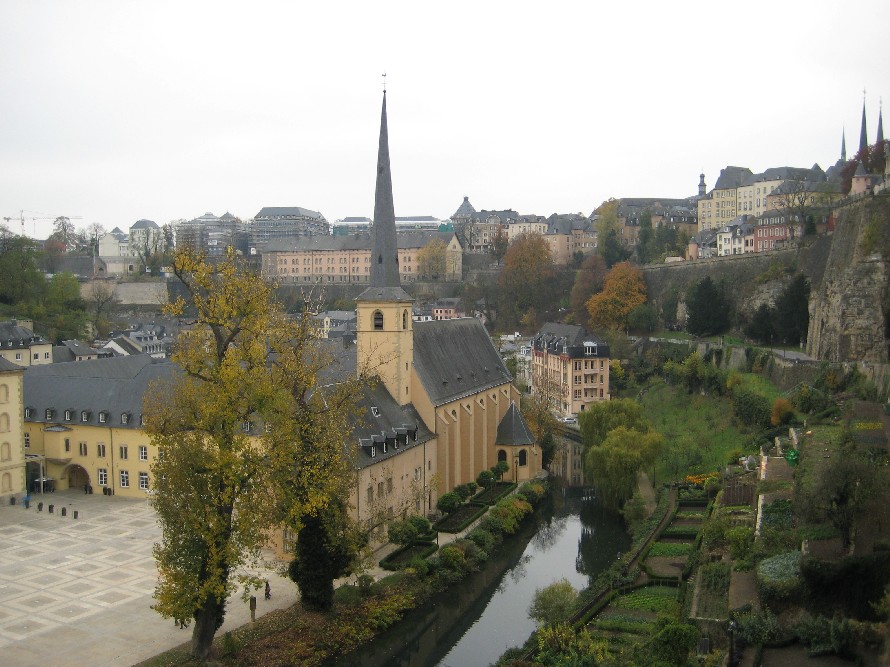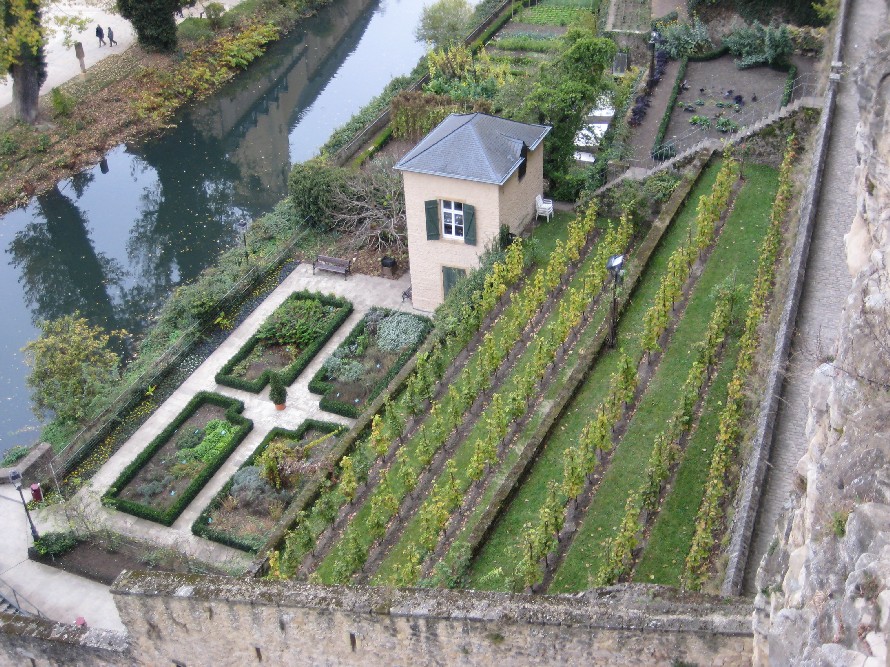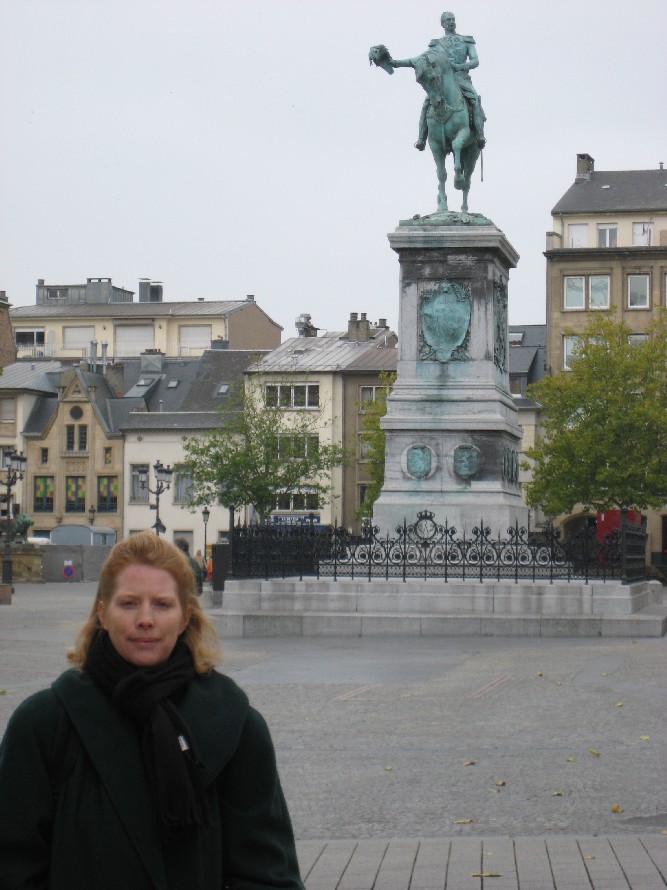
This is a view of the military fortifications of the Old Town.

This is the Palais Grand-Ducal, or the Palace of the Grand Dukes. Luxembourg is still "ruled" via Constitutional Monarchy by a Grand Duke. Parts of this, which is the daytime offices of the Grand Duke, date from the 16th century. It has a distinctive Spanish-Moorish influence on the facade. The royal family lives outside of town.

The "Bock" is an outcrop on one side of the city which is where the city started. The first duke of Luxembourg built a castle in 963AD on this stony "promontory" and started the city. During the 18th century, tunnels or casemates were added underneath, and you can take a tour of some of them. Here is an old cannon in one of the openings that were used to defend the city.

This is the Church of St. John the Baptist and is a lovely baroque-style church on the shores of the river, below the Bock.

On the cliffside next to the church is a garden, where they grow various fruits, vegetables, and grapes to make wine. The tour guide mentioned how they have a rose bush growing at regular intervals within the grape vineyard. The rose bush basically takes all of the diseases and things like that, so that those things don't infect and harm the grape vines.

When Luxembourg was a walled city, this was one of the gates into the city.

This is a statue of William III, who they say gave Luxembourg its' independence.